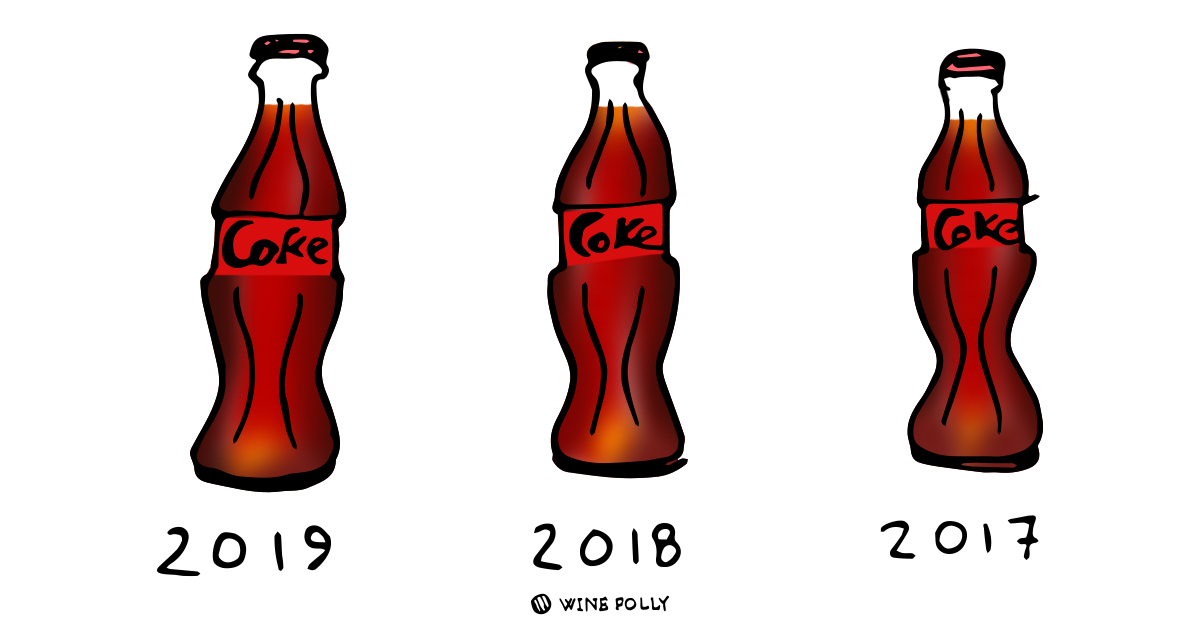Most of us would be infuriated if we bought a bottle of Coca-Cola and it didn’t taste like what we expected.
Ironically, variation is the “raison d’être” of wine.
The reality is, the moment you find a wine you truly love, you have to accept it will never be the same again. Why? Vintage variation.
Learn more about vintage variation and how weather plays a role in the taste of wine.
Um, silly question: what’s a vintage?
The vintage date on a wine label refers to the year in which the grapes were harvested to make wine. The growing season (and its weather conditions) define how wines taste and age!
- A rainy year: Rainy years increase rot and disease pressure, producing lower quality grapes.
- Rains right before the harvest: This causes grapes to swell and produce flabby (low acid and less concentrated), uninteresting wines.
- A super dry year: Vines become stressed and produce very little fruit. Still, fruit quality can be quite high!
- A hot year: Temperatures over 92 ºF / 33 ºC cause vines to stop metabolizing and ripening fruit. This often creates wines with elevated alcohol levels but rigid, unripe tannin flavors, and less acidity.
- Frost late into spring: Frosts can kill buds on the vine and cause uneven ripening. It also shortens the growing season, increasing the pressure for perfect weather in the fall.
- Spring hailstorms: Hailstorms cause severe crop damage and greatly reduce the size of the vintage.
- Early fall frosts: Vines shut down and grapes stop ripening. This generally increases volatile acidity in wines.
So, what makes a “perfect” vintage?
The “perfect” growing season is a sunny, not too hot, not too cold, not too dry, nor too wet year. Yep, baby bear style.
This is a year where spring slowly leads into summer, and summer gradually tapers off into fall. Preferably, it’s a year with just enough rain to keep the vines slightly thirsty so they don’t overproduce grapes.

Of course, the reality is that each growing season presents a different set of challenges.
And, great wines seem to reflect the year in which they were made.
What to do about it?
Most people use vintage charts for clues on what vintages to seek out and those to avoid. Here are a couple of good charts to check out:
Then, there are a few of us who are a bit more zen-like and simply continue to buy wine from producers we enjoy. Yes, the wines change from year to year, but there’s magic in that.
Coca-Cola doesn’t have that kind of magic.

